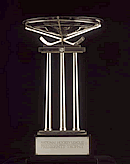In 2005, noted comic Stephen Colbert premiered the term ‘truthiness‘. The term has taken on a life of its own. Truthiness refers to the quality of preferring concepts or facts one wishes or believes to be true, rather than concepts or facts known to be true.
Pretty much every game day of the NHL season, you can hear some coach say a version of this: “There are two critical points on the line today”. Yes, you get two points for winning an NHL game. But no, it turns out there are lots of NHL points which are not critical. A surprisingly large number of points. And I’m not talking about the NHL’s bottom dwellers ‘tanking games’ to secure a better draft spot. I’m talking about playoff-bound teams. Sometimes “two critical points” are exactly that. Sometimes, its just truthiness.
Differences Among Sports
The four major North American sports all use a playoff system to determine the champion. In each sport, the higher you finish, the higher seed you are given. A higher seed comes with benefits for the postseason. But the benefits of a higher finish are very different from sport to sport.
Football (NFL) and baseball (MLB) offer the greatest postseason benefits to teams having stronger regular seasons. Both leagues have wild card rounds. The teams with better records avoid having to risk elimination in the wild card round. The NFL has four playoff levels. However, four of the 12 teams that qualify get to skip the wild card level. MLB ‘s specific implementation of the wild card is different, but is similar in the most important aspect: it is a major advantage to avoid playing a wild card round. In football, home field is also a major advantage. In baseball and football, getting a higher playoff seed matters.
The NBA and NHL
The playoff format in basketball (NBA) and hockey (NHL) is essentially identical. The playoffs invite 16 teams. There are four rounds, each series in a round is the best of seven games. In both sports, there are two advantages of being a higher seed. The higher your seed, the lower the seed you play. In theory, the bigger the gap between the seeds, the bigger the gap between the ability of the teams. The second benefit, the higher seed gets to have a Game 7, should it be needed, in their home venue.
In both cases, these are much more significant advantages in basketball than they are in hockey.
The reasons are worth examining and we’ll focus first on the gaps between teams. Teams in both the NHL and NBA can try to improve during the season, but they can also become worse. There are two major factors that can change a team significantly: injuries and trades. Basketball teams are less affected for two simple reasons: injury rates are lower and it is harder to make trades that redefine a team.

Injury rates are straightforward enough. Hockey players are simply more likely to suffer significant injuries that can change the nature of a team. This cuts both ways. A good team can be diminished by an injury, but a struggling team can turn around with a player returning from injury. For example, San Jose Sharks forward Logan Couture missed 30 games this season with injuries, mostly in the first half of the season. When he returned from injury, the Sharks record improved dramatically.
On the day that I began drafting this piece (March 4), my twitter feed noted injuries to John Klingberg, Cory Schneider and Brandon Saad, all difference making players for their teams. The next night, I was at the Shark Tank in San Jose and saw Vancouver’s elite forward, Henrik Sedin, leave the game due to injury. You just do not see this frequency of injuries to high-end talent in the NBA.
The trade part allows for greater change in the NHL than the NBA. Hockey’s trade deadline sees a good bit more activity. In basketball, roughly eight players dominate a team’s playing time. Over twice that many participate in the NHL. NBA salary cap rules are not very flexible. This makes trades more challenging, especially those that involve higher end players with major salaries. Draft picks are also harder to trade, as the NBA draft only runs for two rounds and almost all the value is in first round. Hockey is more flexible on both counts. This leads teams to be able to make substantial changes. Also, the NHL deadline comes later in the season than the NBA, with roughly ¾ of the season complete, meaning teams have more clarity on their major trade considerations.
All these factors mean NHL teams can change substantially more than NBA teams (another rarely used factor is covered in the notes at the end of the article). An NHL team that was middle of the pack for much of the season can upgrade substantially for the playoffs.

An example this season could be Colorado. The Avalanche dealt with injuries and were outside of a playoff seed with under 20 games left in the season. But they added to their team with trades near the deadline. They acquired a major talent in Mikkel Boedker, along with potentially helpful role players in Eric Gelinas and Shawn Mattias. They also got healthier. Goalie Semyon Varlomov is capable of playing at a very high level, but has missed time for a variety of reasons. In an eight game stretch earlier in the season, Varlomov gave up just 9 goals on 270 shots, a .967 save percentage. In another stretch, he had four games where he gave up just one goal in each game; 4 goals in 140 shots for a .971 save percentage. No team wants to face that quality of goaltending in a playoff series, independent of the seed.
The hot goalie, the key player returning from injury and the high-end acquisition with a late season trade are team changing factors in the Stanley Cup playoffs. These hockey factors are either greater or simply do not exist in the other major sports. This sort of variability in the NHL means the correlation between a team’s record (ie, their playoff seed) and its current level of play is not all that strong.
The Reality
So the theory laid out above is nice, but does reality concur? Yes it does.
I’ve looked at the higher seeds playing against lower seeds over the past four NHL playoffs. Over the 60 series that have been played, exactly 30 have been won by the higher seed, meaning 30 have been won by the lower seed. It is literally a coin toss on whether the higher seed wins. In the NBA, the 60 series covered in the same timeframe overwhelmingly favor the higher seeds. Higher NBA seeds hold a 43-17 record over lower seeds.
In the NHL where the seeding differences were large (5 or more spots, such as 2 seed vs a 7 seed), the record in playoff series only modestly favors the higher seed: 13-9 over the past four seasons. An advantage, but hardly what one might expect given that only very good teams are able to get high seeds.
An advantage mentioned earlier that we haven’t analyzed yet: a higher seed gets a home venue advantage for a Game 7. That advantage is supported by the facts in the NBA, but not in the NHL. Over the past five years, home teams in Game 7 in the NBA are 12-3. In the NHL, home teams are 13-16. Measured by results , home court for an NBA Game 7 is a very clear advantage while home ice for an NHL Game 7 is largely meaningless.

Another look at the correlation between points and playoff success comes from analyzing recent Presidents’ Trophy winners. The Presidents’ Trophy is awarded to the team that finishes with the highest regular season point total. We’ll compare their point totals to that of the teams that won the Stanley Cup.
Looking at full seasons (prorating the 2013 shortened season to 116 points), the average is about 116 points for the Presidents’ Trophy winner. The eventual Stanley Cup winner averages about 104 points. In the lockout shortened season, several effects described earlier in the article are minimized, and it was the only year where the Presidents’ Trophy winner also won the Stanley Cup. Take out that season and the results were even more dramatic — on average, about a 14 point differential between the Stanley Cup champion and the league’s best record.

The last seven Stanley Cup winners were seeded at almost every available spot: 1st, 2nd, 3rd, 4th , 4th, 6th and 8th out of the eight seeded playoff teams in their conference. The only time a top seed in either conference also won the Stanley Cup in the last seven years was the lock-out shortened season.
The evidence is quite clear. Get into the Stanley Cup playoffs and a team can go as far as their ability can take them. Their ability is not inherently related to their playoff seed.
What does this all tell us? Once a team gets to about 100 points (or has effectively locked up a playoff spot), additional points become essentially meaningless. There is no quantifiable benefit. It may fly in the face of truthiness, but a higher seed accomplishes nothing.
As of now, the Washington Capitals have 100 points, effectively clinching a playoff spot. From here on out, Capitals head coach Barry Trotz season should only focus on making his squad the best they can be for the postseason. Soon, a host of other teams will join the Capitals in having clinched a playoff spot, mostly in the Western Conference. The three California teams are close to locking themselves in. Chicago, St. Louis and the Stars are also close. All six of these teams are at least 15 points ahead of teams with the potential to bump them out of the playoffs. It’ll take a little while longer for the better Eastern teams to sort it out. But the same lessons apply. Once a team is locked in, it is playing to be the best team it can be in the next part of season. The part of the season that begins with Game 83.
Coach Speak
The basics are clear: higher seeds have not won the majority of playoff series over the last several years and they’ve lost a home Game 7 more often than they won. Climbing up the rankings to gain a higher seed is simply not critical. It is very possible that finishing with a higher seed will result in a tougher playoff matchup.
A coach may speak to the value of two points for a win in a game, but in practice, there is very little value in the points themselves once a team has qualified for the playoffs. Once the playoff objective is reached, the coach should be trying to maximize their team’s opportunity for success in the postseason. Additional points are not part of that equation.
There is value to be found once a team has clinched a playoff berth. Teams will want to continue to play well, to stay focused and to make sure they are in the process of peaking for the playoffs. Pursuing additional points may not matter, but pursuing excellence does. Coaches will want their teams to increase their competitiveness. Accepting mediocrity, even for a short period, is not healthy.
For some teams, the best use of these remaining games may be about working on issues like integrating new acquisitions, adjustments to special teams or allowing prospects to get some NHL time. It may be about resting older veterans, players who have nagging injuries or players who have taken an inordinate amount of ice time. It may be about adjusting the culture or sharpening a mental edge for the group. Once a team has qualified for the playoffs, objectives should change.
Coaches can use these post-qualification games wisely. Optimizing the benefits of these games starts with acknowledging that “there are two critical points on the line” is really just truthiness.
Zeke’s Notes: